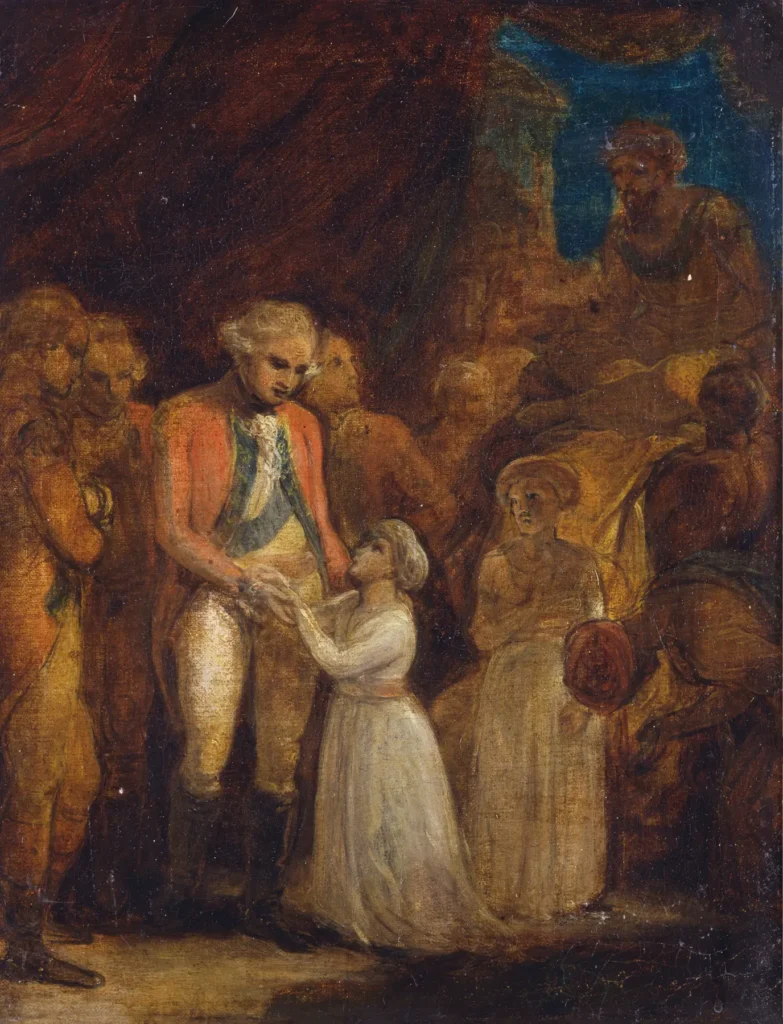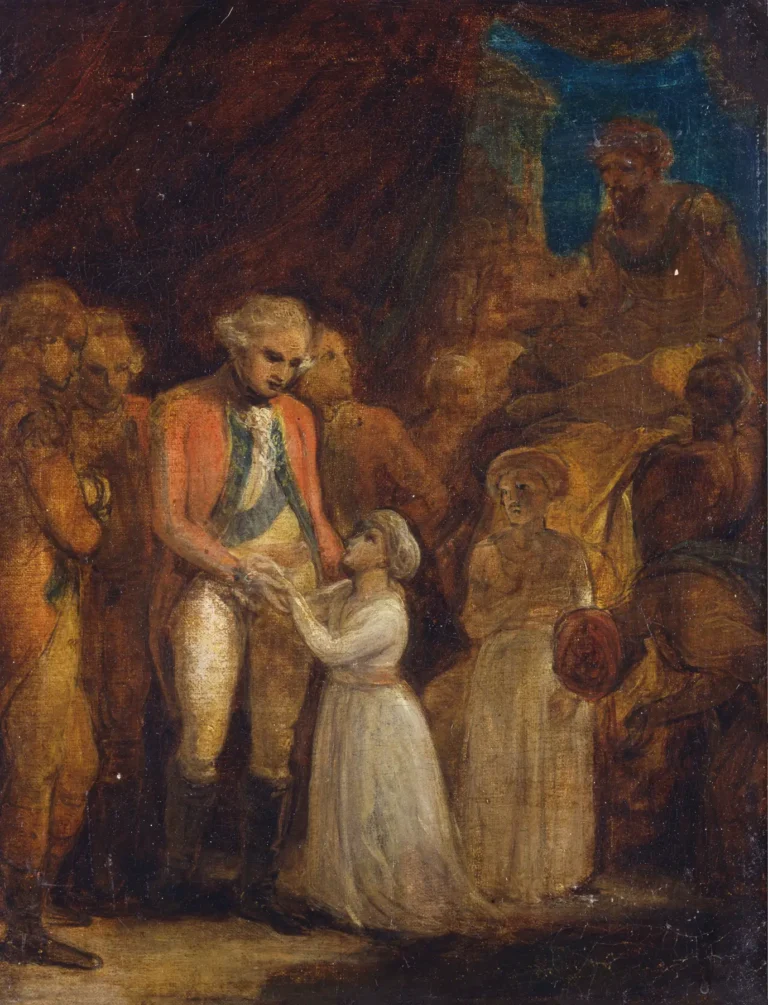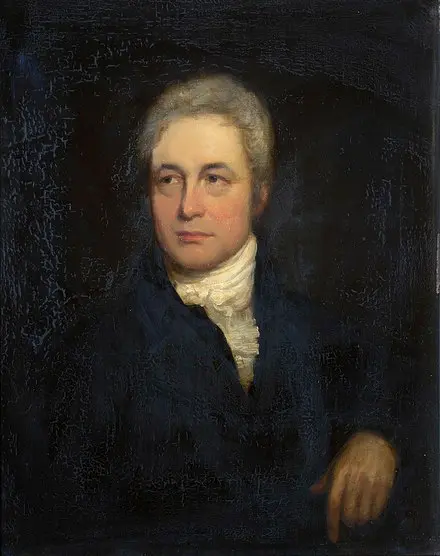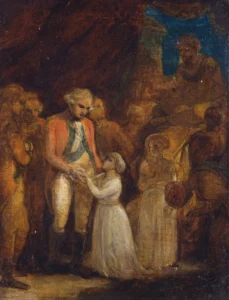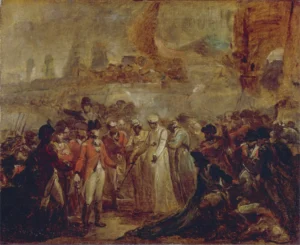The Two Sons of Tipu Sahib, Sultan of Mysore, Being Handed over as Hostages to General Cornwallis (ca. 1792)
Created by British artist Robert Smirke in approximately 1792, 'The Two Sons of Tipu Sahib' is a striking oil on canvas that depicts a tense moment of historical significance. The painting illustrates the ceremonial transfer of the sons of Tipu Sultan, the ruler of Mysore, to British General Cornwallis as hostages. This transfer was part of a peace treaty following the Third Mysore War, symbolizing the turbulent interactions between British colonial forces and Indian rulers. The poignant imagery and the emotional weight of the subjects make this artwork a compelling piece of both art and history.
Year 1792
About the Artwork
The artwork portrays a deeply impactful chapter in the history of Mysore and the British colonial rule in India. After several years of war, the Third Mysore War brought about devastating consequences for Tipu Sultan and his kingdom. Facing defeat, he consented to a peace treaty which mandated the surrender of his two young sons as hostages to General Cornwallis to ensure compliance. The painting encapsulates the tension between the two cultures and the heartbreaking exchange of these innocent young boys, who were caught in the crossfire of international politics. Smirke's work serves not only as an artistic endeavor but also as a visual documentation of a poignant historical moment.




